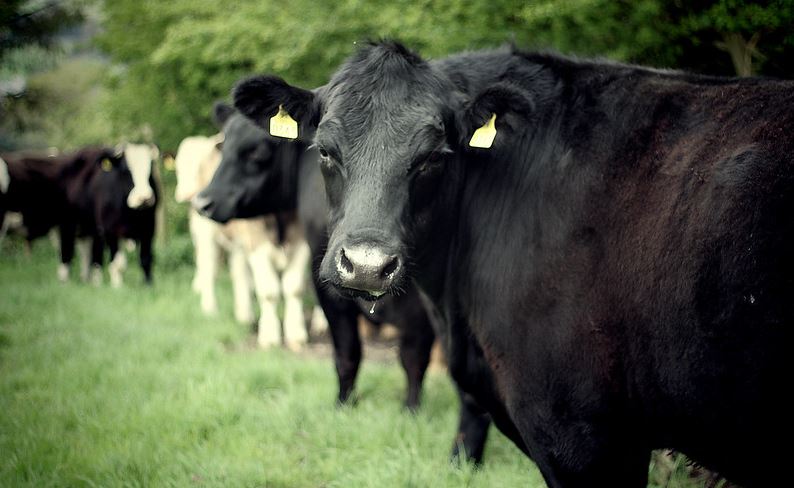
Purchasing local beef in bulk quantities can be a great option for many families. Buying an animal to have butchered gives the consumer a choice in how the animal is fed, processed, and packaged. Families can pool resources together to split an animal into halves or quarters in consideration of their budgets and available freezer space. Perhaps most appealing to consumers is the opportunity to support your local economy and know the families in your community raising your beef.
Buying beef directly can come with some learning curves. In bulk beef purchases, you pay for both the live animal and the processing of that animal. The farmer is paid for raising and finishing the animal. They typically charge a fee per head or pound of live weight. Butchering costs are priced per pound of hanging weight (also called hot carcass weight). With both live weight and carcass weight being significantly higher than the amount of packaged meat you will add to your freezer, it’s understandable that consumers can be left wondering “Where’s the beef?” The rest of this article will aim to explain the steps of bringing a live animal to your freezer and where yield losses may occur.
As soon as the animal leaves the farm, weight loss begins. “Shrink” is the term used for weight loss during transportation, primarily water loss and emptying of the digestive tract. Once the rendering process begins at the abattoir, they remove hide, horns, and internal organs. The hanging weight or hot carcass weight divided by the live weight of the animal equals your dressing percentage (Example: 1400 lb steer / 868 lb carcass = Dressing Percentage of 62%).
So if a 1400-pound steer is reduced to an 868-pound carcass, then I should make room for 868 pounds of meat in my freezer, correct? Not hardly. Since processing fees are often based on the 868-pound carcass weight, this is where there tends to be misunderstanding on the part of the consumer. The hot carcass weight still includes excess bone, fat, and moisture. Further water loss occurs in the cooler due to evaporation before the fabrication of meat cuts ever begins.
When the butcher finally begins to break down the carcass, he or she will split the carcass into quarters and then separate wholesale or primal cuts such as a Chuck, Rib, Loin, and Round. These cuts are further processed into sub-primals or retail cuts based on the customer’s specifications. During this step of the process, they will separate tender muscles from less tender, thicker muscles from thinner, and fat from lean.
Custom fabrication is a highlight of purchasing bulk beef locally, but directions given to the processor have a significant impact on the overall yield of product you receive. For example, if you ask for 93% lean ground beef you will get less overall product due to less fat being added back in when grinding. Requesting deboned cuts will also decrease yield. Useable products may be the same for you at home, but the pounds of wrapped goods going into your freezer decrease.
For the sake of further illustration, we’ll say you bring home 570 pounds of meat for your freezer. If you paid the farmer $3,500 for the animal and paid the processor $1,000, your total cost was $4,500. Divide that by 570 pounds of meat in your freezer and your average price per pound comes to $7.89 per pound of beef. This average includes ground beef, stew meat, roasts, and steaks.
Numbers used here have just been an example, not necessarily the expectation you should have each time you have an animal slaughtered. I used 62% as the dressing percentage in my example, but that initial carcass yield could easily vary from 58% to 64% depending on the age, gender, breed, and diet of the animal.
My hope is regardless of the size and type of cattle you buy for your freezer, you now realize that the farmer nor the processor is likely conspiring to steal meat from you. As always, I encourage you to reach out to your local UGA Extension office with further questions on the topic.